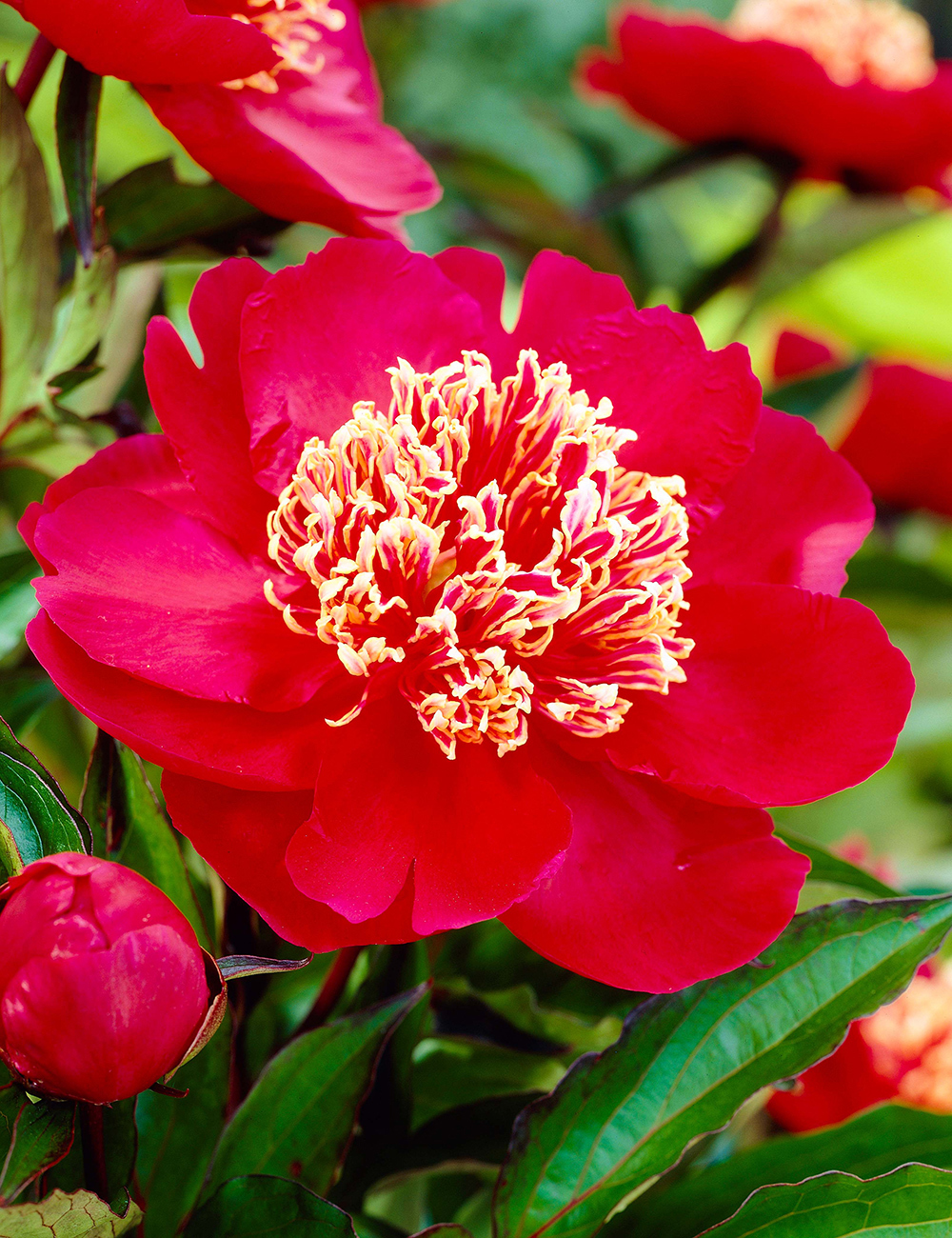

Peony 'Charles Burgess'
An absolute treasure.
This product is currently out of stock and unavailable.




Open, single blooms in a magnificent shade of magenta red. The exquisite, cupped flowers open midsummer (M-L season) amid deep green foliage. A heritage, Japanese style Peony Rose with blooms up to 20cm across. Glossy, deep green foliage. No to low perfume.
Peony ‘Charles Burgess’ was bred by William Kreckler in 1963. It is a rare find and worth a grow.
Why not spoil yourself and enjoy an abundant spring to summer display of intoxicating loveliness. Peonies look exotic and temperamental and yet they are remarkably hardy and grow well in cool to temperate Australian gardens.
Peonies are vigorous, long lasting garden plants with prolific and opulent blooms. Their bushy growth and productive flowering look wonderful in the garden and of course they make the most wonderful cut flowers.
Bear in mind, you will have to be patient to enjoy the flowers of Herbaceous Peonies as they need a little time to establish their roots – they have big blooms to fuel. But the wait will be justified for many years to come as they are extremely long lived and easy care once they are established.
It will take two to three years depending on conditions to get a good display. They might not look like they are doing much above the ground, but under the soil they are working hard. Mature plants can have a rootball that weighs almost 30kg and stretches up to 90cm across – this takes time to develop.
The exotic flowers of Peonies have been cherished since the 5th century. During their long and illustrious history, Peonies have been the flower favoured by Emperors and Gods. Fortunately, they are now accessible to the common gardener.
Peonies are heavy feeders, so you need to fertilise them regularly (Anzac Day and Melbourne Cup Day are easy ways to remember when). They like lime and lot’s of it, so be sure to indulge them. Plant your Peonies just beneath the surface with around 2cm of soil covering them. If they are too deep, they are unlikely to flower.
Peonies need cold winters (3-7C nights at least for around six weeks) for best flowers. As a general rule, if apples can grow where you are, so can Peonies.
If your climate doesn’t get that cold, but you still want to try your luck because you can’t resist their charms, then here are some tips. To give them the best chance in warmer climates you should seek out a cool spot, with shelter from the hot afternoon sun. Ideally you should mulch well (but not too close to the tuber it needs to remain shallow). They need a winter rest, so if they aren’t naturally going dormant, you can force them into it by cutting them back hard in early winter. Freeze an ice cream tub of water and put it on their roots overnight in July to give them a bit of a chill – don’t let this allow them to become waterlogged though. All these things will give you the best chance.
Supplied as: Bare rooted
Size: na
| Code | PELCB |
|---|---|
| Botantical name | Paeonia lactiflora |
| Height | 70-90cm |
| Width | 60-80cm |
| Flowers | Mid-Late Season - Spring to Summer |
| Climate | Cool to Mediterranean |
| Availability | Australia wide |
| Frost hardiness | Fully Hardy |
| Aspect | Full Sun to Semi Shade |
| Supplied as | Bare rooted |
| Size | na |
| Water needs | 2 |

